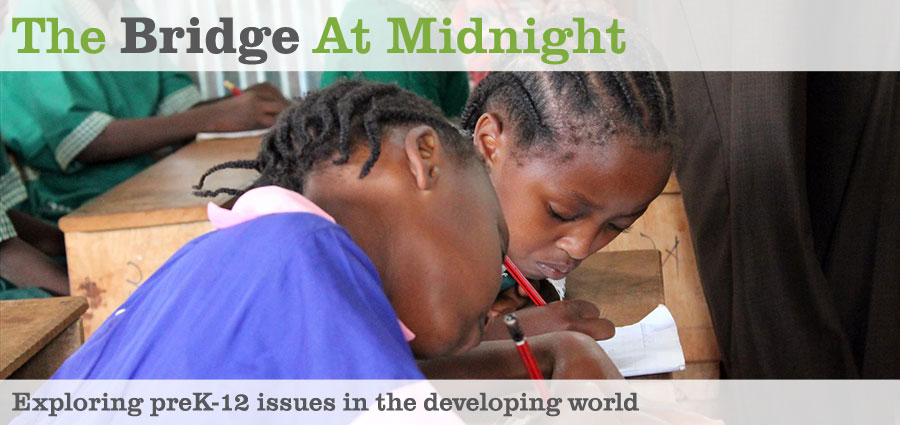Is “Hope” A “Nice To Have” or a “Need To Have”
Posted: November 6th, 2013 | Author: Michael Goldstein | | 1 Comment »
In Kenya, kids take high stakes KCPE at the end of Class 8. The English portion of the exam is, in some ways, similar to the USA English exams. Usually a tough question is: how much do “reading strategies help,” and how much is the only path to success “kids who read a ton, real books”?
Here Maddie Winter asks a third question. She writes:
Take a look at a paragraph from the released New York State 8th grade sample test questions:
Little Women
by Louisa May Alcott
Beth, Meg, and Jo March are the daughters of Mrs. March. Their next-door neighbor is an elderly, rich man named Mr. Laurence, who is raising his grandson, Laurie. Beth is very shy and perceives Mr. Laurence to be a grumpy man.
Beth Finds the Palace Beautiful
But Beth, though yearning for the grand piano, could not pluck up courage to go to the ‘Mansion of Bliss’, as Meg called it. She went once with Jo, but the old gentleman, not being aware of her infirmity, stared at her so hard from under his heavy eyebrows, and said “Hey!” so loud, that he frightened her so much her ‘feet chattered on the floor,’ she never told her mother, and she ran away, declaring she would never go there any more, or even for the dear piano.
Did I lose anyone? Now imagine two pages of that text. Rinse and repeat six times and you just finished day one.
All too often, test passages like that scare kids off. Maybe it happens right away. Maybe it happens two pages in. Negative self-talk kicks in such as “I can’t do this”, “I’m going to fail anyway, why bother?” or “NONE of this makes sense.” It breaks my heart thinking kids are going through such devastating fixed mindset thoughts, and I know those thoughts spike during testing season.
Teachers are prepping students across the country by teaching them test taking strategies like process of elimination, using text features, and finding answers with the most textual proof. In Reading Without Limits I advocate teaching such strategies (in moderation) as the test is its own unique genre, and great test takers are strategic. Ultimately, the best way to boost standardized test scores as I cite in RWL, is to get your kids reading, reading, and reading some more (and not test passages… choice, shared, and guided texts).
There’s also one more ingredient that’s necessary in building effective test takers. That’s hope. If teachers taught kids how to turn their negative self-talk into positive self-talk, I guarantee scores will go up. Instead of drilling kids by making them take tests over and over, instead, we should explicitly model hopeful thinking when taking difficult passages.
Bold emphasis is mine.
Hey, Aungar. What do you think?
Is this a wishful sentiment? Or a specific strategy that can and should be operational-ized for the kids at Bridge?
Read Maddie’s whole thing here. She does a nice job of showing how a kid with “hope” would attack Little Women.


[…] http://www.thebridgeatmidnight.com/2013/11/06/is-hope-a-nice-to-have-or-a-need-to-have/ […]